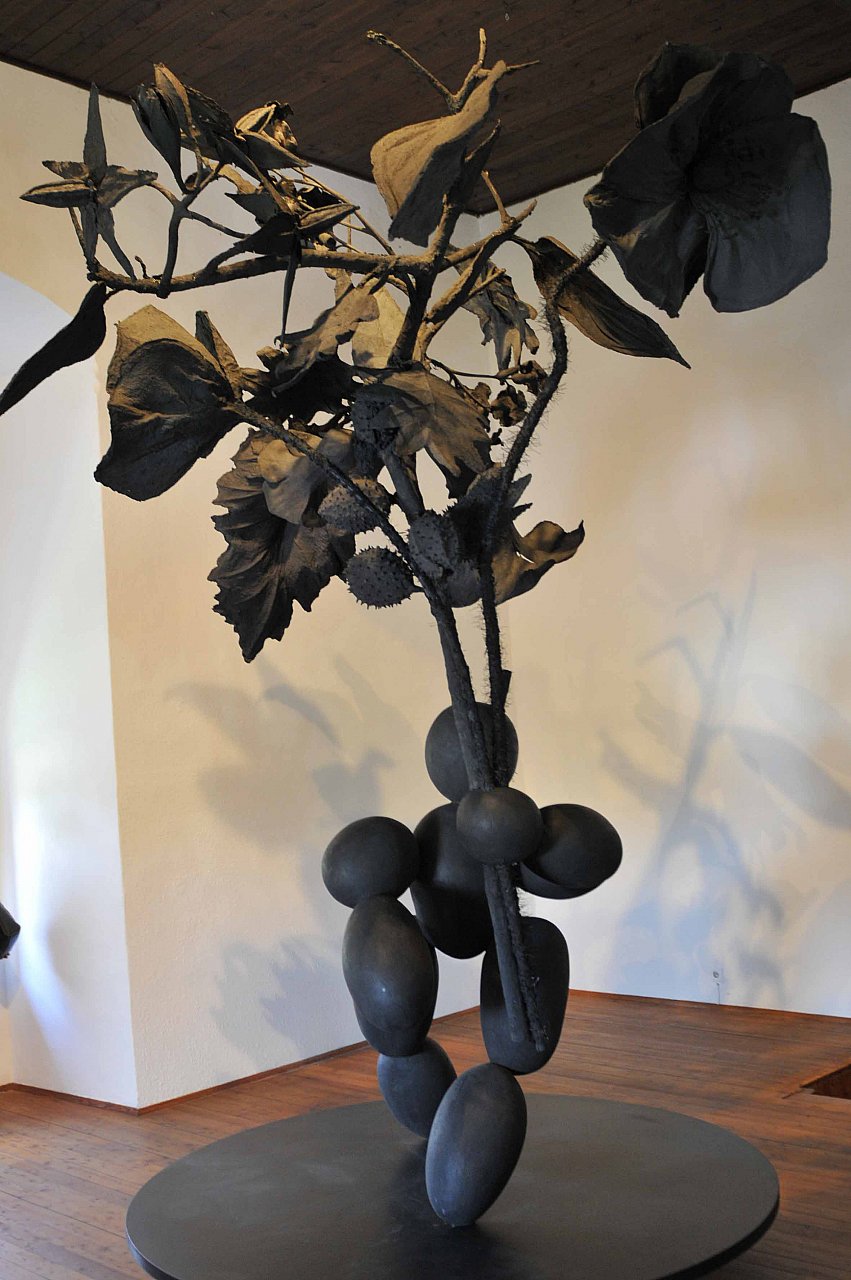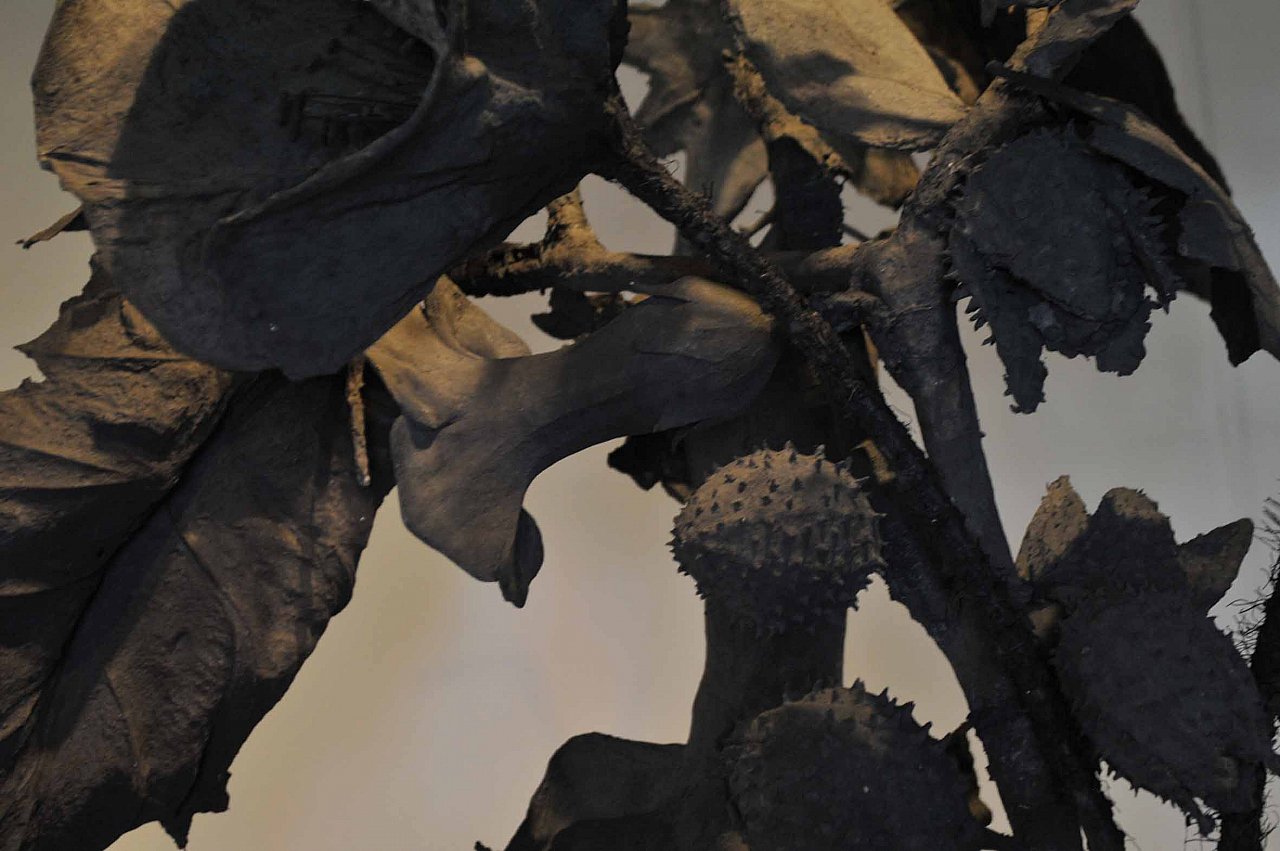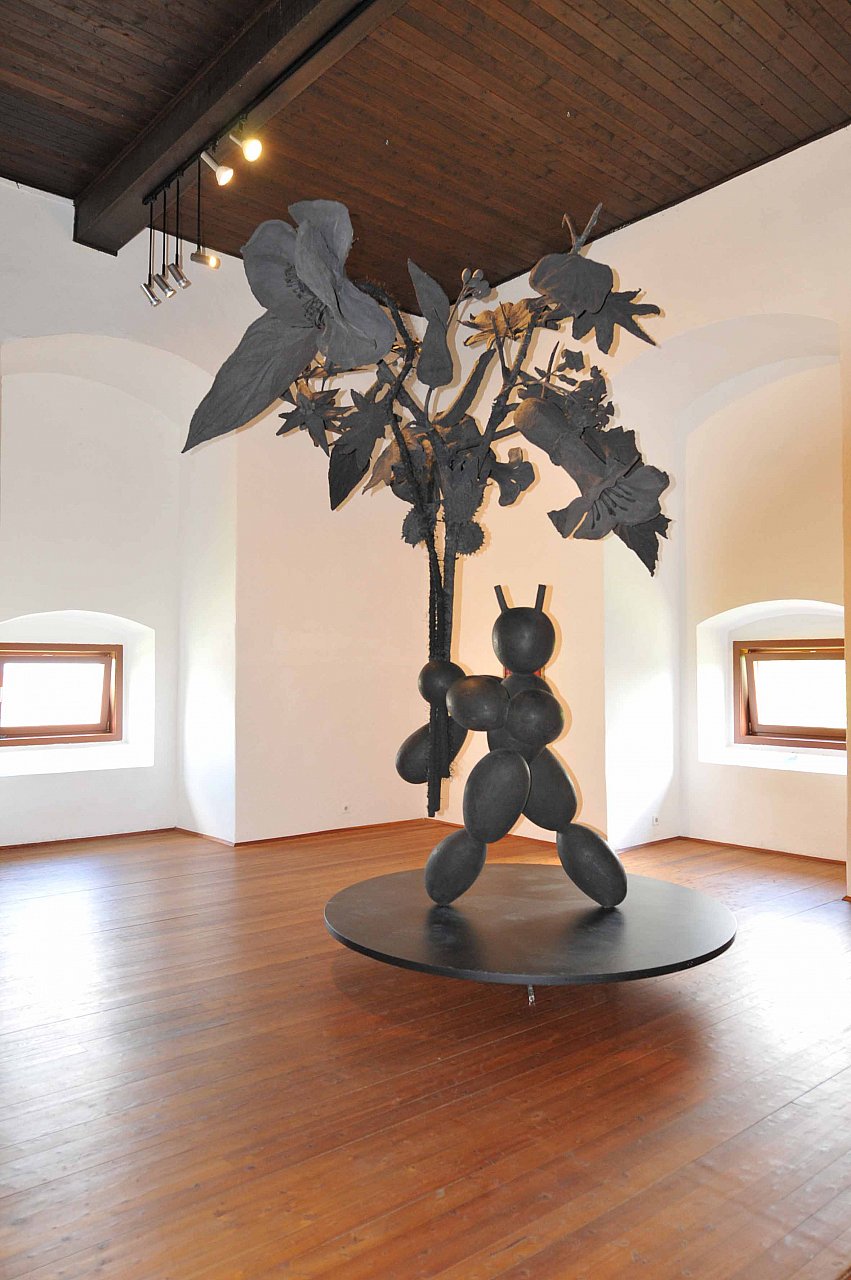Karawanen
Ines Doujak
Ines Doujak
Exhibition Series
Alltagskultur und Gegenwartskunst
museumORTH
curated by Hilde Fuchs
2018 November July 2 to November 1
For her exhibition Karawanen (Caravans) at museumORTH, Ines Doujak created works that would interact with the museum’s collection of objects from everyday culture. Among her works was also a large and imposing sculpture shown in the Turmzimmer (tower room) of the museum, which is usually reserved for contemporary exhibitions.
Doujak’s art explores the conditions of oppression, while also demonstrating how events and developments in the past continue to influence us today. In her works at museumORTH, she reveals how 19th-century colonial exploitation relates to the world we live in today. Embedded in critical discourses, her works are born out of a combination of artistic research, performance practices, and (political) activism. Theatricality, immediacy, and a deliberate use of the human body are not only typical visual strategies of protest movements, but are also characteristic of Doujak’s artistic language. In her collages, sculptures, installations, and performative interventions, she frequently relies on the power of drastic images to highlight disturbing themes.
The (as of yet small) army of life-sized “robots” intermingling with the permanent collection evoke associations of temporary sculptures made for parades or protests, with hints of Dada and nostalgic children’s toys. The five figures constructed out of packaging cardboard, which she found in paper recycling dumpsters, are clothed in T-shirts bearing a crest designed by the artist. This kind of heraldic emblem, which has always been an expression of power, runs throughout the exhibition and can be found, for example, on a flag, or as an all-over pattern on a specially manufactured dress from Doujak’s “fashion label” Not Dressed For Conquering.
The artist frequently addresses the mechanisms and consequences of global trade in many of her series, including the afore-mentioned “fashion label” group, as well as in works focusing on the economics of desperation. Her latest works refer directly to China’s latest wide-scale infrastructure project called the “New Silk Road.” Also known as the “One Belt, One Road” project (or Belt and Road Initiative, BRI), it is currently the most ambitious infrastructure and trade project of the People’s Republic of China under President Xi Jinping.
The New Silk Road will help China to maintain its trade markets and create new ones, while also considerably advancing its economic interests. With the New Silk Road giving China an “anchor in Europe” and using the means of “soft power” by raising its significance and economic expansion via investments, development projects, and the cultural and diplomatic expansion of spheres of influence, China is spearheading a new form of globalization. The era in which the countries with the largest populations, China and India, were primarily regarded by Western industrial nations as export markets or low-wage countries are clearly over. The Chinese New Silk Road is proof of China’s will to grow and its policies that are radically future-oriented. This is something that many Western democratic governments have since lost sight of and which could perhaps also be regarded as a “symptom” of the crisis of democracy and capitalism that has often been diagnosed of late.




